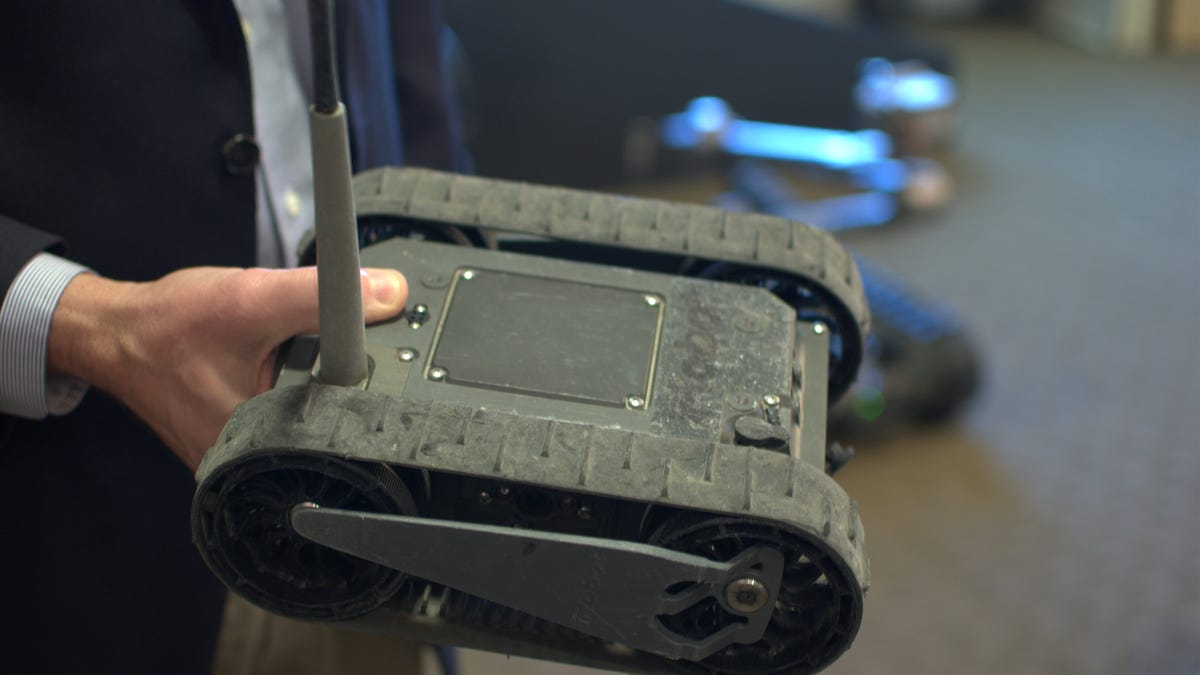iRobot military bots learn how to phone home
Semiautonomous robots start to take the field with the ability to find their way home and right themselves when knocked over. And soon they'll be able to create mesh networks.

BEDFORD, Mass. -- In the movies, robots always have a mind of their own. But for iRobot's military bots, it's a slow process of gaining more smarts.
The company's latest military robots, which run on caterpillar tracks and resemble miniature tanks, are slowly adding autonomous features to improve their capabilities.
iRobot's latest military robot, the throwable 110 FirstLook, has the ability to right itself if it lands upside down and retrace its tracks if it gets out of communications range. A group of these encyclopedia-size robots will soon be able to create a mesh network to connect to a remote operator.
The company's larger robots also are gaining these types of features, which makes them more useful in the field, said Tim Trainer, the general manager of iRobot's military business unit. But giving independence to robots needs to be added bit by bit, rather than in one fell swoop, he said.
"Government and military customers want more autonomy and the way to get there is through incremental changes to get the warfighter and the Army administration comfortable with it," Trainer said.
About 100 of the 110 FirstLook robots were delivered to the military which will use them for helping create a map of dangerous areas.
Autonomy is one of the primary areas of research at iRobot and spills across all its product lines. The company's Ava pedestal-shaped robot, for example, will likely gain better object recognition and map-creating ability over time, said Chris Jones, the company's research program manager.
The military remains one of iRobot's core business, but cuts in some programs means the company has to diversify from its reliance on the military and its home-cleaning products. Later this year, it will begin testing its Ava mobile robot for use in health care, retail, or building security.

